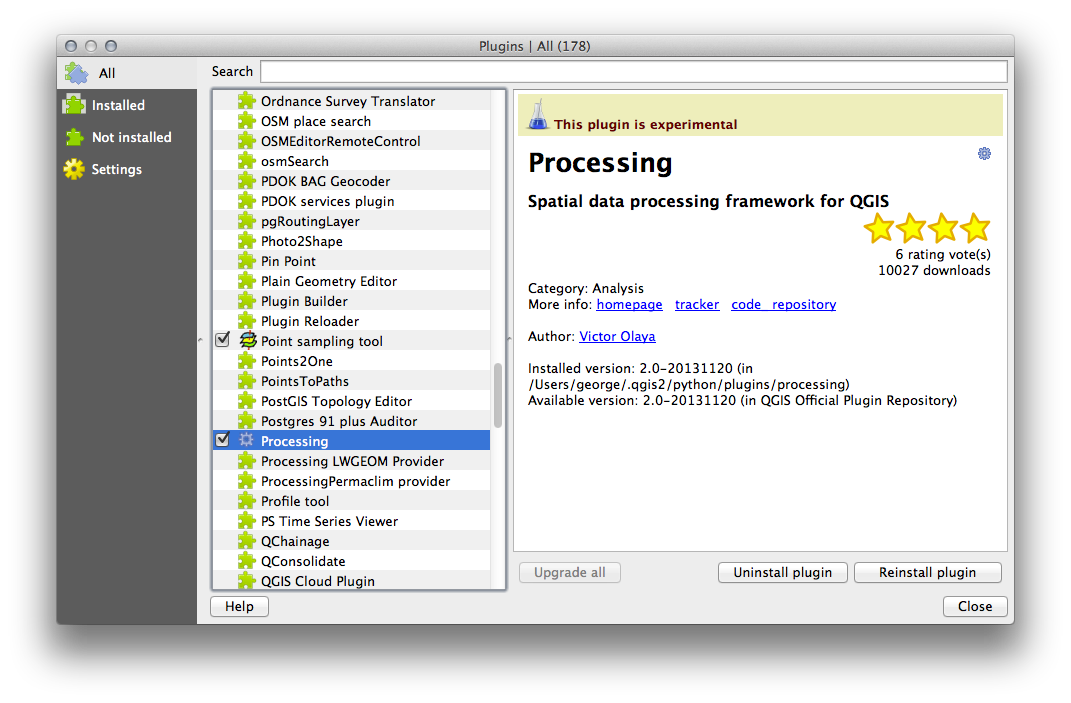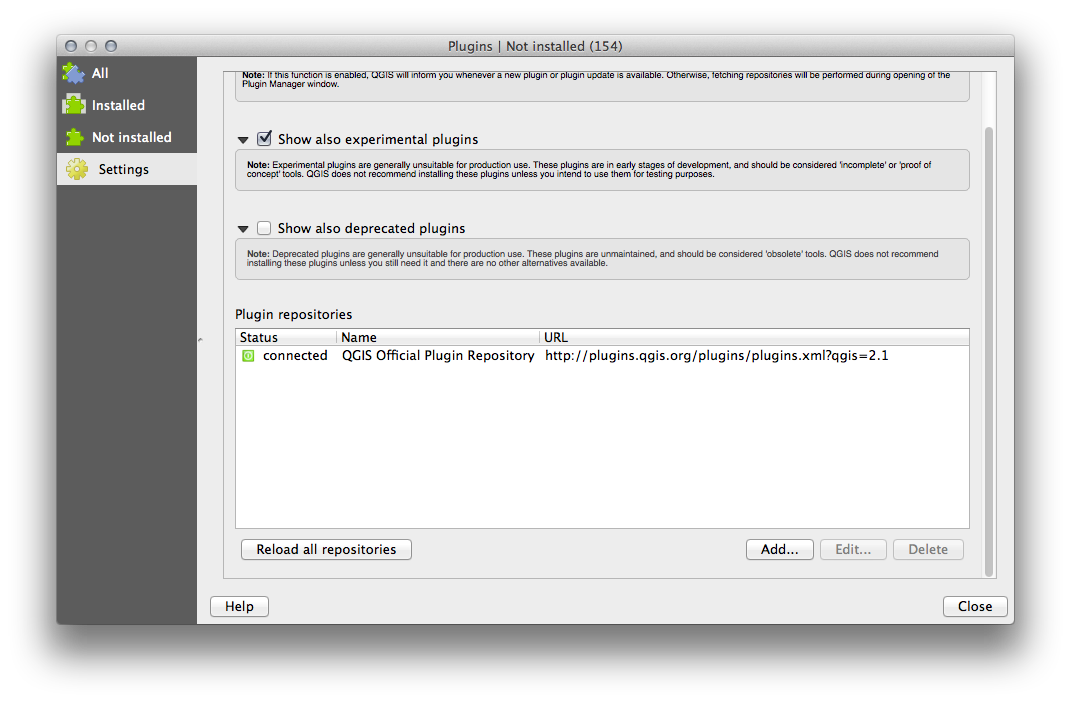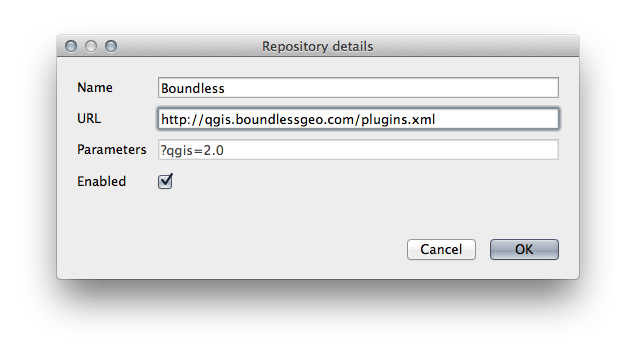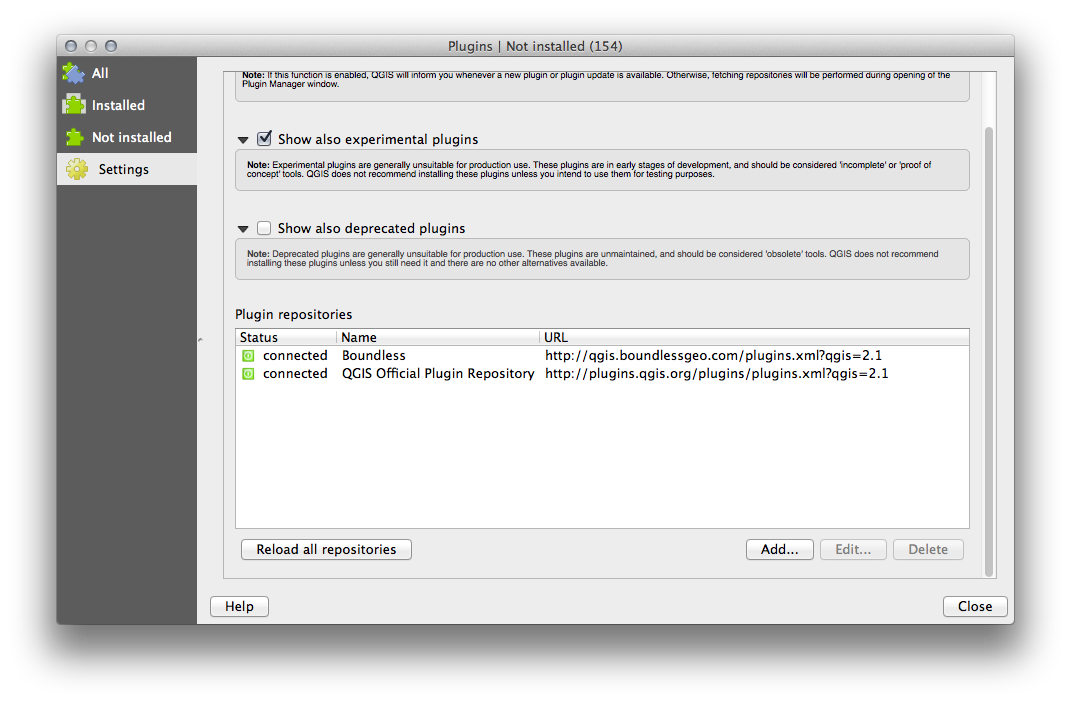1. Lesson: Installing and Managing Plugins¶
To begin using plugins, you need to know how to download, install and activate them. To do this, you will learn how to use the Plugin Installer and Plugin Manager.
The goal for this lesson: To understand and use QGIS’ plugin system.
1.1.  Follow Along: Managing Plugins¶
Follow Along: Managing Plugins¶
To open the Plugin Manager, click on the menu item Plugins ‣ Manage and Install Plugins.
In the dialog that opens, find the Processing plugin:

Click in the box next to this plugin and uncheck it to uninstall it.
Click Close.
Looking at the menu, you will notice that the Processing menu is is now gone. This means that many of the processing functions you have been using before have disappeared! This is because they are part of the Processing plugin, which needs to be activated for you to use them.
Open the Plugin Manager again and reactivate the Processing plugin by clicking in the checkbox next to it and clicking Close..
The Processing menu should be available again.
1.2.  Follow Along: Installing New Plugins¶
Follow Along: Installing New Plugins¶
The list of plugins that you can activate and deactivate draws from the plugins that you currently have installed.
To install new plugins, select the Not Installed option in the Plugin Manager dialog. The plugins available for you to install will be listed here. This list will vary depending on your existing system setup.

You can find information about each plugin by selecting it in the list of plugins displayed.

A plugin can be installed by clicking the Install Plugin button below the plugin information panel.
1.3.  Follow Along: Configuring Additional Plugin Repositories¶
Follow Along: Configuring Additional Plugin Repositories¶
The plugins that are available to you for installation depend on which plugin repositories you are configured to use.
QGIS plugins are stored online in repositories. By default, only the official repositories are active, meaning that you can only access official plugins. These are usually the first plugins you want, because they have been tested thoroughly and are often included in QGIS by default.
It is possible, however, to try out more plugins than the default ones. First, you want to configure additional repositories. To do this:
Open the Settings tab in the Plugin Manager dialog:

Click Add to find and add a new repository.
Provide a Name and URL for the new repository you want to configure and make sure the Enabled checkbox is selected.

You will now see the new plugin repo listed in the list of configured Plugin Repositories

You can also select the option to display Experimental Plugins by selecting the Show also experimental plugins checkbox.
If you now switch back to the Get More tab, you will see that additional plugins are now available for installation.
To install a plugin, simply click on it in the list and then click the Install plugin button.
1.4. In Conclusion¶
Installing plugins in QGIS is simple and effective!
1.5. What’s Next?¶
Next we’ll introduce you to some useful plugins as examples.